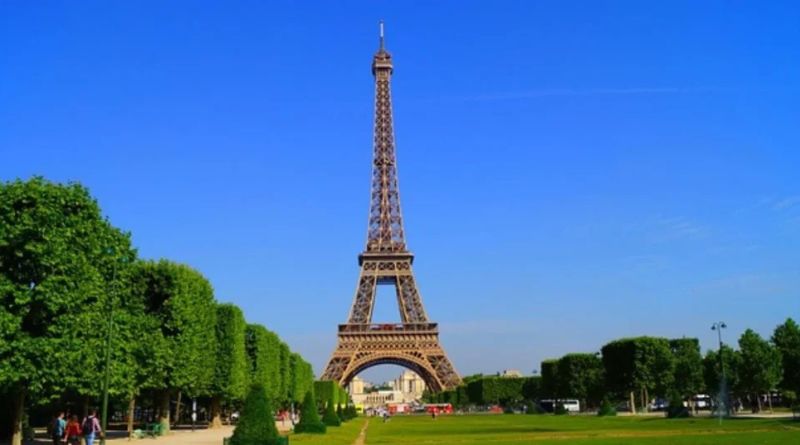Things That Are 500 Feet Long: A Look at Large Objects in the World
The world is full of objects, structures, and phenomena that can be difficult to comprehend due to their immense size. When you hear the number “500 feet,” it’s hard to imagine just how long that really is. To put things in perspective, 500 feet is roughly the length of one and a half football fields, or about the same as the length of a city block. In this article, we will explore various objects and structures that are approximately 500 feet long. These examples will help to paint a clearer picture of just how vast and impressive certain things can be when measured in feet.
1. A Football Field (and a Half)
One of the most common ways to measure length in the U.S. is by using the size of a football field. The official length of a football field, including both end zones, is 360 feet. So, a structure or object that measures 500 feet would be roughly the length of one and a half football fields. This makes it easier for people to understand the scale, especially when they are comparing it to a familiar reference point.
2. The Length of an Average City Block
Another good reference point for understanding 500 feet is the typical length of a city block. While city blocks can vary in length depending on the location, many are around 500 feet long. In cities like New York or San Francisco, blocks can range from 300 to 600 feet, but 500 feet is a good average to use. This comparison helps put into perspective how far you might walk if you were to travel the entire length of a city block.
3. The Height of a 50-Story Building
While this measurement pertains to height rather than length, it’s important to note that a 50-story building is often about 500 feet tall. Skyscrapers and high-rise buildings vary in height depending on the design and the number of floors, but 500 feet is a common height for buildings in large cities. For example, the historic Chrysler Building in New York stands at about 1,046 feet, but some of the shorter office buildings in metropolitan areas might top out at around 500 feet, which is still quite tall compared to most residential structures.
4. The Length of an Olympic Swimming Pool
An Olympic-sized swimming pool, used for international competitions, is 164 feet long. While this is not as long as 500 feet, if you placed three Olympic pools end-to-end, you would come very close to the 500-foot mark. This gives a sense of the magnitude of a distance that might seem hard to visualize at first.
5. The Largest Airplanes
Large commercial airplanes, such as the Boeing 747, are often in the vicinity of 500 feet in length, depending on the model. The Boeing 747-400, for example, is approximately 231 feet long, so two of these aircraft placed end to end would measure just under 500 feet. This comparison helps people relate to the sheer size of these massive machines, especially when we consider how they can comfortably carry hundreds of passengers at once.
6. The Brooklyn Bridge’s Length
The Brooklyn Bridge, one of New York City’s most iconic structures, spans a length of 5,989 feet, but its individual spans are much smaller. The main span, where traffic flows, measures about 1,595 feet, but if you focus on a smaller part of the bridge, it’s easy to see that 500 feet is an important portion of this historic structure. A 500-foot portion of the bridge’s total length is about the distance you would walk across the span if you were taking a leisurely stroll.
7. The Length of a Cargo Ship
When it comes to large vessels, many cargo ships are often around 500 feet long. For instance, the Liberty Ships, which were used during World War II to transport materials, measured about 441 feet in length. Modern cargo ships, such as container ships, can be much larger, sometimes stretching to over 1,000 feet. However, many of these vessels that help facilitate global trade sit in the 500-foot range.
8. The Length of a Baseball Field’s Outfield Wall
In Major League Baseball, the outfield wall of a baseball field can vary greatly from one stadium to another. However, many major stadiums have outfield walls ranging from 325 feet to around 400 feet in depth. To give a sense of scale, consider Fenway Park in Boston, which features an outfield wall that’s 420 feet deep in center field. While not exactly 500 feet, these outfield walls are fairly close in distance to the length of a football field and give some context for distances in the sporting world.
9. The Great Wall of China (In Some Sections)
The Great Wall of China, an architectural marvel, stretches across 13,000 miles, but there are sections of the wall that extend for around 500 feet. Although some parts are far longer, several parts of the wall have been reconstructed to a length of about 500 feet, allowing visitors to walk along it and marvel at its history. This comparison helps us understand the massive scale of the Great Wall, and how it can be broken down into more manageable sections.
10. The Space Shuttle’s Length
NASA’s space shuttle, used in space exploration for decades, measured about 122 feet long. However, the length of a fully assembled space shuttle (including the external fuel tank and solid rocket boosters) could easily exceed 500 feet. These components together form one of the most complex and longest spacecraft ever built, providing another example of just how large space-faring vehicles can be.
11. A Large Commercial Fishing Boat
Fishing boats used in commercial operations around the world can vary greatly in size, but many industrial fishing vessels reach lengths around 500 feet. These boats are often used for deep-sea fishing, and their size allows them to carry large amounts of fish and crew for extended trips at sea. Their size ensures they can stay at sea for longer periods without returning to shore too often.
12. Tall Trees in the Amazon Rainforest
While individual trees may not be anywhere near 500 feet tall, the towering canopy of the Amazon rainforest is a great natural example of large scale. Some of the tallest trees in the Amazon reach up to 200 feet tall, so if you compare the combined height of several towering trees, they can collectively measure up to 500 feet. This can help give some perspective to the size of natural wonders that we often don’t consider in everyday measurements.
FAQs About Things That Are 500 Feet Long
1. How long is 500 feet in other measurements?
- 500 feet is equivalent to approximately:
- 167 yards
- 152.4 meters
- 0.0948 miles
2. What is the length of a skyscraper compared to 500 feet?
- Many skyscrapers, such as the famous Empire State Building, are far taller than 500 feet. The Empire State Building stands at 1,454 feet, which is three times taller than 500 feet. However, many mid-rise buildings are built around 500 feet in height.
3. What other structures are around 500 feet in length?
- Large bridges, such as the Golden Gate Bridge in its individual spans, and tall communication towers also fall into a similar range of measurements.
4. Can 500 feet be a manageable distance for construction projects?
- Absolutely. A 500-foot span is common in the construction of dams, highways, and bridges where long spans are needed for the development of infrastructure.
Understanding the scale of 500 feet can make it easier to comprehend the magnitude of certain things in the world. From skyscrapers and bridges to vehicles and natural wonders, 500 feet is a substantial distance that often marks the length of some of the world’s most iconic and functional structures. Whether considering the immense length of a cargo ship or the dimensions of a football field, 500 feet is a helpful measure to frame the size and scale of large objects around us.



